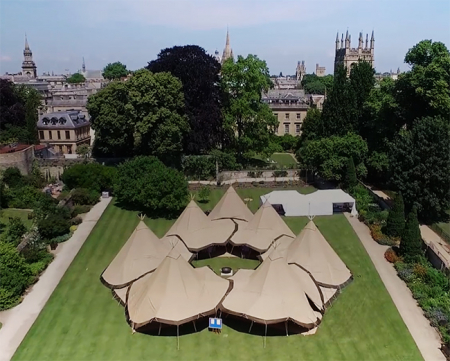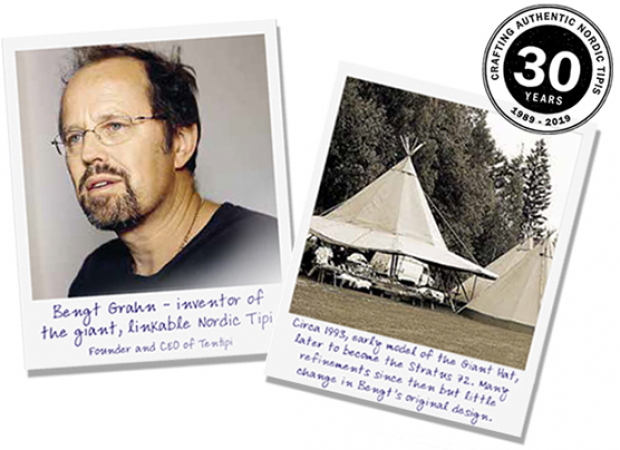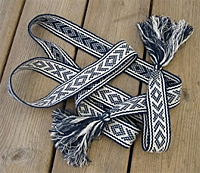Please choose your country or region so we can show you the most relevant content.
It looks like you are in United States? Accept
Africa
- Algeria
- Angola
- Benin
- Botswana
- Burkina Faso
- Burundi
- Cabo Verde
- Cameroon
- Central African Republic
- Chad
- Comoros
- Congo
- Côte d'Ivoire
- Djibouti
- DR Congo
- Equatorial Guinea
- Eritrea
- Eswatini
- Ethiopia
- Gabon
- Gambia
- Ghana
- Guinea
- Guinea-Bissau
- Kenya
- Lesotho
- Liberia
Asia
Australasia
Europe
- Albania
- Andorra
- Austria
- Belarus
- Belgium
- Bosnia and Herzegovina
- Bulgaria
- Croatia
- Czechia
- Denmark
- Estonia
- Finland
- France
- Germany
- Greece
- Greenland
- Holy See
- Hungary
- Iceland
- Ireland
- Italy
- Latvia
- Liechtenstein
- Lithuania
North America
Middle East
2019 marks our 30th Birthday, a whole three decades since our founder and CEO, Bengt Grahn, started to make the prototype tents that now form the backbone of our global brand.
It was in 1989, in the village of Moskosel in Swedish Lapland, that Bengt had his ‘light bulb moment’ (he was actually changing a light bulb at the time), and decided that he would start making Nordic tipis. “I had a dream – to make the perfect tent. A tent to socialise around the fire. In Swedish Lapland. In the wilderness, near the Arctic Circle…”
As anyone who is familiar with Tentipi products probably knows, our tipi design was inspired by the kåta, a simple frame of wooden poles, covered by animal hides, with an opening at the top to let out smoke, used by the Sami people of northern Scandinavia. “…. In this harsh environment the Sami people have survived, through the ages, using the traditional Nordic tipis. We couldn’t have had a better starting point!”
Soon after the Adventure range of camping tipis was launched, work started on what was to become the Event range as we now know it. The development of the Stratus 72 - with sides that can be raised - marked the beginning of the giant Nordic tipi event industry that now reaches to all corners of the world. The continual refinement of joining techniques, and an almost limitless number of possible configurations, is what sets the Stratus 72 apart from other temporary structures used in the event industry. It is central to the Tentipi story.

© Love Tipis, www.lovetipis.co.uk
As word has spread about the Stratus we have sold into more and more countries, for an ever-expanding range of events. From English country weddings to a Norwegian ski jumping competition. From Australian beach parties to yoga retreats in California. From music festivals in Mauritius to a semi-permanent dining space in San Francisco. From VIP areas at Glastonbury Festival to corporate events in the United Arab Emirates. This list continues to grow.
Here’s to the growing global family of Tentipi customers. Here’s to another three decades of developing, innovating and crafting beautiful Nordic event tipis. Here’s to the next 30 years of Tentipi.
Related blog posts
Night at the Zoo – explore the park after dark and fall asleep in a Nordic tipi
Monday 10th January 2022
Wouldn't it be exciting to spend the night right in the middle of a zoo? – That is exactly what you can do at Skånes Djurpark, a wildlife park in southern Sweden. At their campsite, Camp Oak, you stay in the park after it closes and will make yourself at home in a Nordic tipi from Tentipi. When the night comes you might just fall asleep to the wolves’ howls.
Skånes Djurpark is a Wildlife Park with a long history, it dates back to 1952. It focuses on animals from the Nordic area and has always lived by the ruling with “no animals in cages”. The animals live in large paddocks that recreates the animals’ natural environments.
Sapmi Nature Camp – Sami culture and glamping in the arctic
Thursday 30th December 2021
Lennart Pittja is a Sámi entrepreneur with a mission: with his world-renowned eco-tourism company he wants to spread the knowledge about his people – the Sami, indigenous of northern Scandinavia and Russia. With over 20 years of experience as a wildlife guide and nature photographer in the arctic region he started Sápmi Nature Camp. Where his guests stay in Nordic tipis from Tentipi on his reindeer herding land outside of Gällivare, in northern Sweden.
At Sapmi Nature camp you can experience real winter, see the northern lights, eat traditional Sami food, and have a cultural exchange in a genuine atmosphere. The scenic location has gained attraction from around the world. In 2017 it was listed by National Geographic as one of the top 21 places in the world to visit if you care about the planet.
The birth of Tentipi Stratus 72 – How a Sami-booth at a trade fair revolutionized the event tent rental business
Wednesday 29th December 2021
Stratus 72, the giant Nordic tipi shaped like a witch’s hat has become one of the most iconic and loved product from Tentipi. The story behind it is both long and fascinating. It involves the Sami, a 1000 square meter booth, and a mobile slaughterhouse.
The United Nations general assembly proclaimed 1993 to be the year of the world´s indigenous people with the goal to protect and promote the right of indigenous people. This made it possible for interest groups and organizations to apply for grants for projects relating to these issues.
Ivan Eriksson is Sami and he has been working with projects to strengthen and further the Sami-culture for most of his life. He has always had one leg in reindeer husbandry and working to strengthen Sami rights has always been close to his heart. When he heard about the opportunity to do something during the special UN-year he knew that he had to make something extraordinary.
Discovering the world’s most remote places with Mike Fuchs
Thursday 17th June 2021
It was the first day of the trip, adventurer Mike Fuchs and his friend Eric Folz had just a couple of hours before been dropped off as far north as they could possibly come in Svalbard when they saw them. Two polar bears, one mother and its cub. A situation that could become deadly if the bears decided to have a closer look on their new visitors.
“I know how protective the mothers can be of their cubs. We had to set up our camp in a place that provided a good overview of the location so we could spend the night bear watching. It was both a scary feeling seeing them so early into our trip, but it was also very fascinating”, says Mike Fuchs.
Luxurious glamping in arctic Sweden
Friday 21st May 2021
From all around the world top businessmen, Russian oil oligarchs and Hollywood celebrities travels to the tiny village of Lassbyn in Norrbotten, northern Sweden. Here our long time customer Fredrik Broman runs Aurora Safari Camp, the world’s first glampsite in an arctic winter climate. The popular destination has been long in the making and started over 20 years ago on the African savannah.
Fredrik Broman is born and raised along the Råne river valley in Norrbotten. The forest, the flowing waters and photography are passions that have been important all through his life. Fredrik is a trained teacher and as part of his teaching degree he travelled to Kenya in the late 90’s to work at the Swedish school in Nairobi and to write and take photos for a textbook. As time went by he got to spend more time with his camera and developed his great interest in photography.










Please click the 'Add comment' button below if you wish to comment.